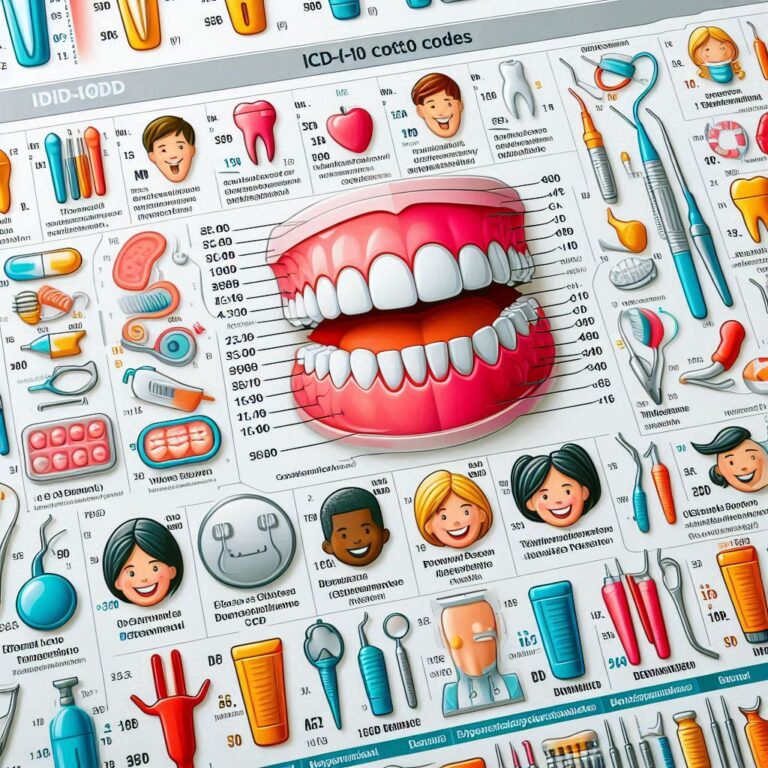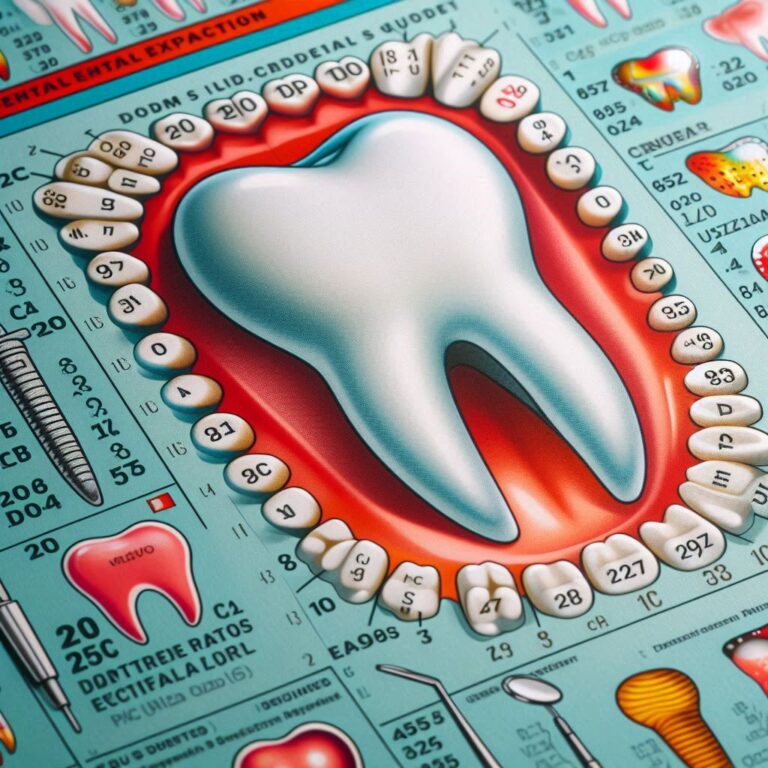D2920 Dental Code meaning
The D2920 dental code is a specific procedural code used in dentistry to describe the process of adding a crown to a tooth that already has a pre-existing crown. This procedure is often referred to as a “re-cementation” or “replacement” of a crown. The American Dental Association (ADA) assigns these codes to standardize dental procedures for billing and insurance purposes. Understanding the D2920 code is crucial for both dental professionals and patients, as it helps in accurately describing the treatment and ensuring proper reimbursement.

What Does D2920 Entail?
The D2920 code is used when a dentist needs to re-cement or replace an existing crown. This could be due to various reasons such as the crown becoming loose, damaged, or no longer fitting properly. The procedure involves removing the old crown, preparing the tooth if necessary, and then placing a new crown or re-cementing the existing one.
Importance of the D2920 Code
The D2920 code is essential for maintaining accurate dental records and ensuring that patients receive the appropriate care. It also helps in streamlining the billing process, making it easier for dental offices to communicate with insurance companies. By using standardized codes like D2920, dental professionals can avoid misunderstandings and ensure that patients are billed correctly for the services they receive.
D2920 Dental Code Meaning Medical
From a medical perspective, the D2920 dental code represents a procedure that is often necessary to maintain oral health. A crown is a cap that is placed over a tooth to restore its shape, size, strength, and appearance. When a crown becomes loose or damaged, it can lead to further dental issues such as tooth decay, gum disease, or even tooth loss if not addressed promptly.
Why Re-Cement or Replace a Crown?
There are several reasons why a dentist might need to re-cement or replace a crown:
- Loose Crown: Over time, the cement that holds a crown in place can wear away, causing the crown to become loose. A loose crown can be uncomfortable and may even fall out, leaving the underlying tooth exposed.
- Damaged Crown: Crowns can become chipped, cracked, or broken due to trauma or wear and tear. A damaged crown may not function properly and can compromise the health of the underlying tooth.
- Poor Fit: Sometimes, a crown may not fit properly due to changes in the tooth or gum tissue. A poorly fitting crown can cause discomfort and may not provide adequate protection for the tooth.
- Decay Under the Crown: If decay develops under a crown, the crown may need to be removed to treat the decay. After the decay is addressed, a new crown may be placed.
The Procedure
The procedure for re-cementing or replacing a crown typically involves the following steps:
- Examination: The dentist will examine the tooth and crown to determine the best course of action. This may involve taking X-rays to assess the condition of the underlying tooth.
- Removal of the Old Crown: If the crown is to be replaced, the dentist will carefully remove the old crown. This may involve using special tools to break the cement seal.
- Tooth Preparation: If necessary, the dentist will prepare the tooth for a new crown. This may involve removing any decay or reshaping the tooth to ensure a proper fit for the new crown.
- Impression: An impression of the tooth will be taken to create a custom-fit crown. This impression is sent to a dental lab where the crown is fabricated.
- Temporary Crown: While the permanent crown is being made, a temporary crown may be placed to protect the tooth.
- Placement of the New Crown: Once the permanent crown is ready, the dentist will place it on the tooth and cement it in place. The crown will be adjusted to ensure a proper fit and bite.
D2920 Dental Code Meaning List
The D2920 dental code is part of a larger list of dental codes used to describe various procedures. Below is a table that outlines some of the most common dental codes related to crowns and other restorative procedures:
| Code | Description |
|---|---|
| D2740 | Crown – Porcelain/Ceramic Substrate |
| D2750 | Crown – Porcelain Fused to High Noble Metal |
| D2751 | Crown – Porcelain Fused to Predominantly Base Metal |
| D2752 | Crown – Porcelain Fused to Noble Metal |
| D2780 | Crown – 3/4 Cast High Noble Metal |
| D2781 | Crown – 3/4 Cast Predominantly Base Metal |
| D2782 | Crown – 3/4 Cast Noble Metal |
| D2790 | Crown – Full Cast High Noble Metal |
| D2791 | Crown – Full Cast Predominantly Base Metal |
| D2792 | Crown – Full Cast Noble Metal |
| D2920 | Re-cement or Re-bond Crown |
| D2930 | Prefabricated Stainless Steel Crown – Primary Tooth |
| D2931 | Prefabricated Stainless Steel Crown – Permanent Tooth |
| D2932 | Prefabricated Resin Crown |
| D2933 | Prefabricated Stainless Steel Crown with Resin Window |
| D2934 | Prefabricated Esthetic Coated Stainless Steel Crown – Primary Tooth |
| D2940 | Sedative Filling |
| D2950 | Core Buildup, Including Any Pins |
| D2951 | Pin Retention – Per Tooth, In Addition to Restoration |
| D2952 | Post and Core in Addition to Crown, Directly Fabricated |
| D2953 | Each Additional Cast Post – Same Tooth |
| D2954 | Prefabricated Post and Core in Addition to Crown |
| D2955 | Core Buildup for Retained Root or Core Buildup for Retained Natural Tooth |
| D2957 | Each Additional Prefabricated Post – Same Tooth |
| D2960 | Labial Veneer (Resin Laminate) – Chairside |
| D2961 | Labial Veneer (Resin Laminate) – Laboratory |
| D2962 | Labial Veneer (Porcelain Laminate) – Laboratory |
Conclusion
The D2920 dental code is a vital part of dental practice, ensuring that procedures like crown re-cementation or replacement are accurately documented and billed. Understanding this code helps both dental professionals and patients navigate the complexities of dental care, ensuring that treatments are both effective and properly compensated.
FAQs
Q1: What is the D2920 dental code used for?
A1: The D2920 dental code is used to describe the procedure of re-cementing or replacing an existing crown on a tooth.
Q2: Why might a crown need to be re-cemented or replaced?
A2: A crown may need to be re-cemented or replaced if it becomes loose, damaged, no longer fits properly, or if there is decay under the crown.
Q3: How is the D2920 procedure performed?
A3: The procedure involves removing the old crown, preparing the tooth if necessary, and then placing a new crown or re-cementing the existing one.
Q4: Is the D2920 procedure covered by insurance?
A4: Coverage for the D2920 procedure varies by insurance plan. It’s best to check with your insurance provider to understand your coverage.
Q5: How long does a re-cemented or replaced crown last?
A5: With proper care, a re-cemented or replaced crown can last many years. Regular dental check-ups and good oral hygiene are essential for maintaining the crown.
Additional Resources
- American Dental Association (ADA): www.ada.org
- National Institute of Dental and Craniofacial Research (NIDCR): www.nidcr.nih.gov
- WebMD Dental Health: www.webmd.com/oral-health


